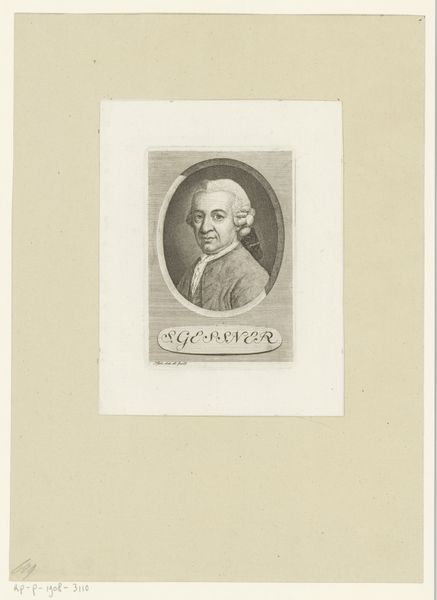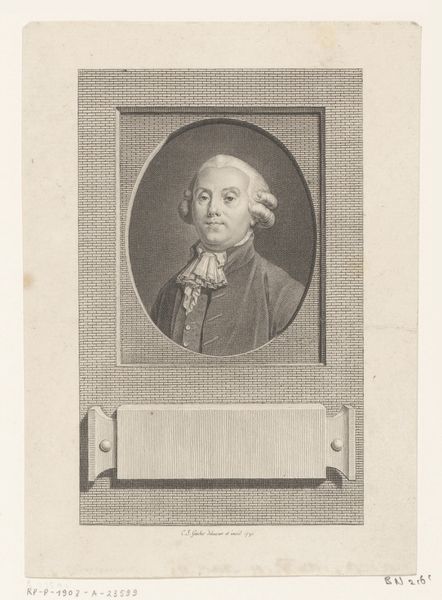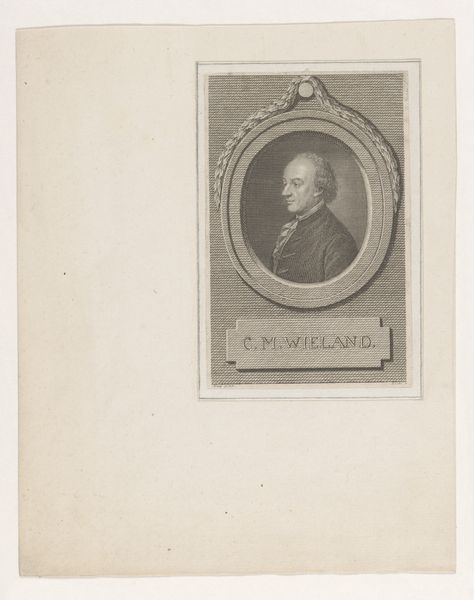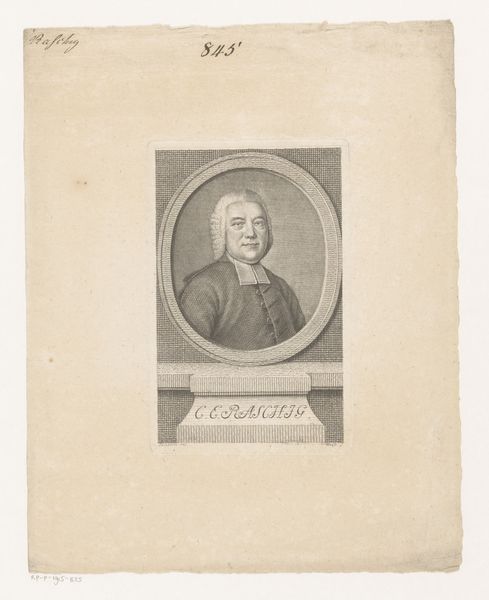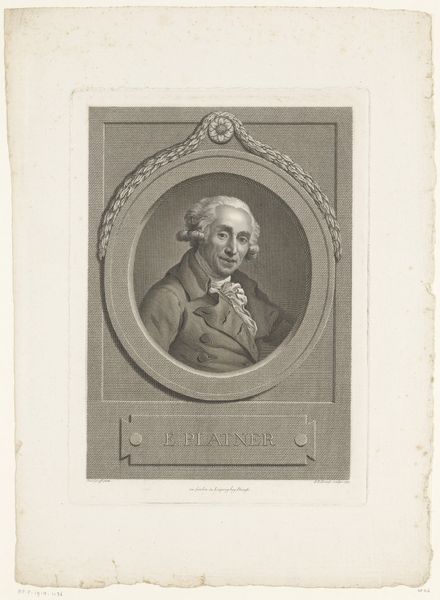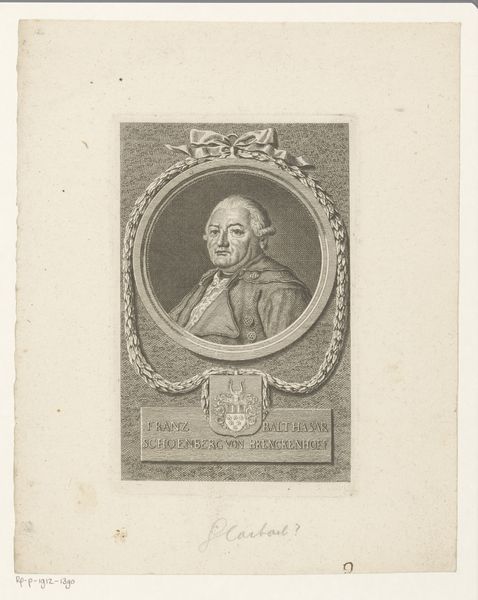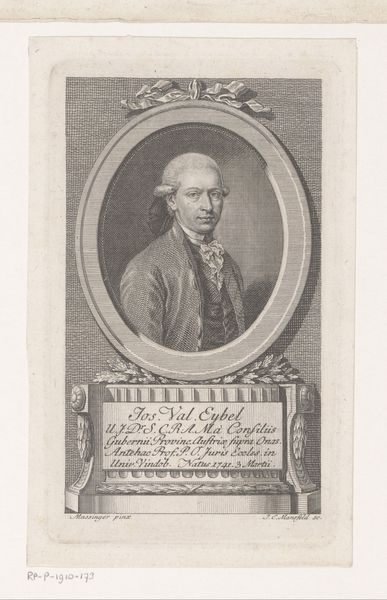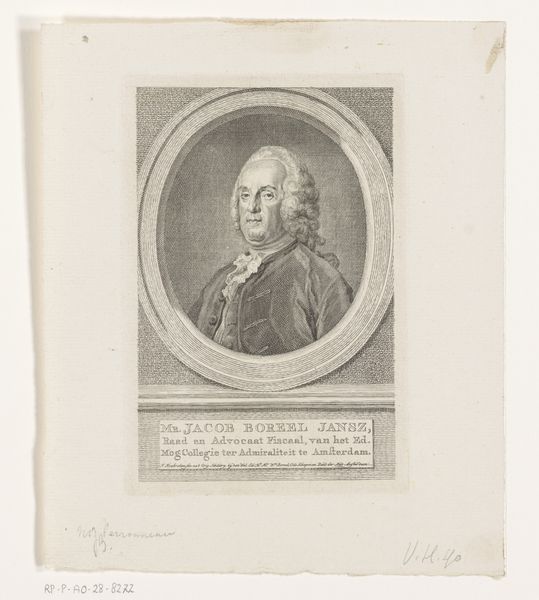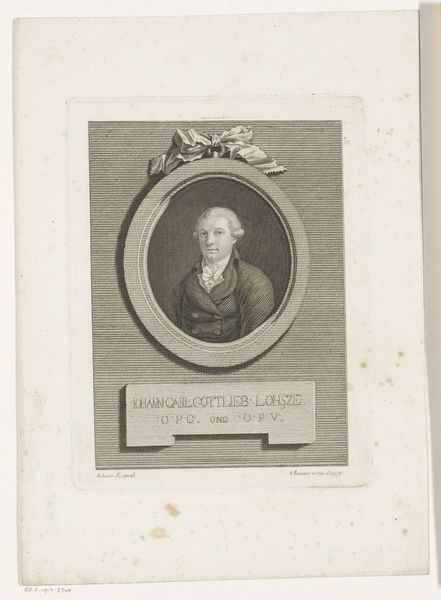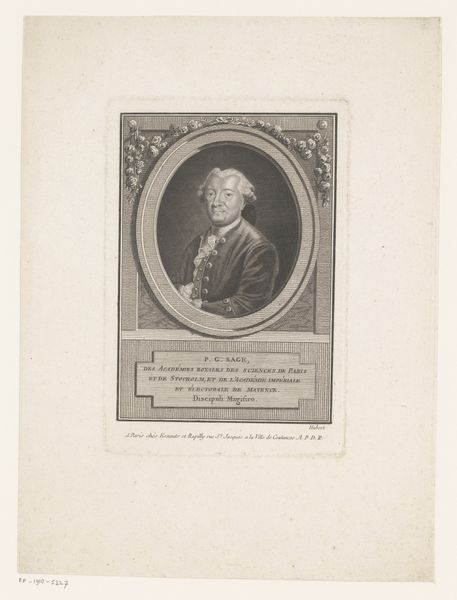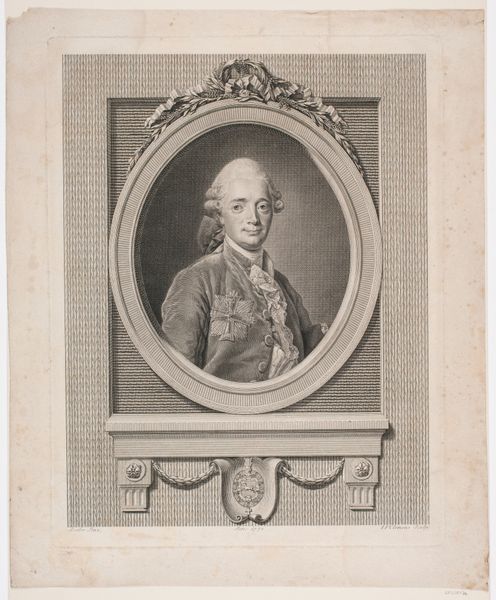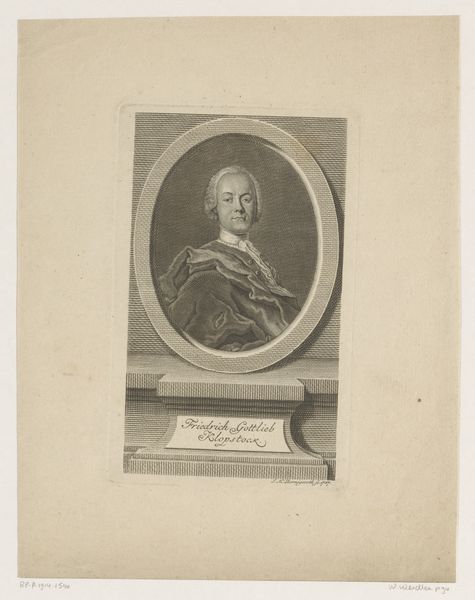
engraving
#
portrait
#
neoclacissism
#
history-painting
#
academic-art
#
engraving
Dimensions: height 301 mm, width 224 mm
Copyright: Rijks Museum: Open Domain
Curator: This engraving from 1781 is a portrait of Jacob Friedrich Kees, created by Johann Friedrich Bause. It's a rather formal depiction, typical of the neoclassical period. Editor: My first impression is of subdued elegance. The monochrome palette focuses attention on the subject’s face, which emanates a certain reserved authority, wouldn’t you say? The oval border and wreath detail almost monumentalize him. Curator: Indeed. The Neoclassical movement really favored these structured, almost architectural compositions to reflect rational ideals. Kees was clearly a figure of some standing to warrant such a portrait, the commission itself a reflection of bourgeois ambition within the Enlightenment ideals of the era. The very act of portraying oneself served social purposes. Editor: Looking at the composition, there’s a deliberate use of symmetry, isn’t there? Even the inscription at the base adds a layer of symbolic weight; those memorial inscriptions speak of legacy. I wonder what values he embodied to his society and immediate relations? Curator: The inscription translates to something along the lines of "To the most beloved spouse, his widow had this made." The context enriches the image because the engraving served as a public declaration and reminder of a private devotion, influencing perceptions and interpretations through artistic creation. These printed portraits were affordable ways of participating in public life. Editor: Fascinating how one portrait can unlock social dynamics and cultural values! Notice, too, how Kees' powdered wig and coat are rendered in such meticulous detail, these become symbols in themselves, signifiers of class and learning, very considered representations. I would assume that these fashion choices would symbolize the values that the public and those close to him hold high. Curator: Absolutely. And, Bause's engraving suggests how even within what feels like a restrictive format—the bust portrait—one could still navigate expectations to communicate specific information to select audiences. It demonstrates the careful negotiation between individuality and conformity in eighteenth-century society. Editor: It also is intriguing that a Neoclassical styled image depicts what could also pass for a baroque depiction, since that powdered wig and his gaze at the viewer could belong to a baroque painting, though of course his clothing choices betray his belonging to another period. The portrait serves, I think, as an artistic dialogue through periods in history. Curator: An astute observation; in essence, a historical echo contained within the artistic product. Editor: Thinking about the cultural memories encoded within the image truly reshapes how we perceive it!
Comments
No comments
Be the first to comment and join the conversation on the ultimate creative platform.
